
Dove siamo
Libreria Antiquaria Dentis
Via San Tommaso 5
10122 Torino TO
Orari di apertura
Martedì a Sabato: 11:00 - 19:00
Domenica e Lunedì: chiuso
Contatti
Tel: +39 011.544.887
Mobile/WhatsApp: +39 349 7536.827
Emai: dentisrarebooks@hotmail.it
#dentisrarebooks
LIBRERIA ANTIQUARIA DENTIS di Dario Paolo Dentis © Copyright 2025 - All rights reserved - P.IVA 09146510012
Johann Joachim, Becher. Physica Subterranea profundam subterraneorum genesin, e principiis hucusque ignotis, ostendens. (insieme:) Specimen Beccherianum , sistens Fundamenta, Documenta, Experimenta, Quibus [...]. Lipsiae, Ex Officina Weidmanniana, 1738.
Libri Antichi LIBRERIA Scienza Esoterismo e Scienze Occulte Matematica e Fisica. illustrato, storia, scienza, astrologia, fisica, chimica, alchimia, erboristeria, farmacologia, mineralogia, flogisto, ermetismo
€1700.00 (In Stock)
Lipsiae, Ex Officina Weidmanniana, 1738. In-4° (22 cm x 17 cm). Pp. (14), 504, (18); (4), 161, (9). Con antiporta allegorica incisa di simbologie ermetica con un essere mistico-zodiacale. Segnatura: )(-2)(4, A-4S4. Legatura coeva in piena pelle marezzata, autore e titolo dorati su tassello sul dorso a cinque nervi, i cassetti con ricchi fregi floreali dorati eseguiti a piccoli ferri. Tagli rossi. Frontespizio stampato in rosso e nero. Carattere corsivo e romano. Prefazione di Georg Ernst Stahl. Testatine e finalini incisi. Seconda parte con numerazione autonoma. Il libro proviene dalla prestigiosa collezione del Docteur Jean Manet di Marsiglia, allegata una scheda storico-descrittiva dell’ opera annotata dal medico sulla su carta intestata. Fisiologiche bruniture sparse dovute al tipo di carta, peraltro esemplare in stato di conservazione più che buono.
Bella e rara edizione, considerata la migliore, nonché l’ unica in quarto di questo influente trattato iatrochimico del celebre alchimista J. Becher. L’ Autore aveva sviluppato una sua teoria della combustione che servì da base per la celebre teoria del Flogisto del suo allievo George Ernst Stahl, il chimico che sviluppò il concetto di “terra pinguis” nella teoria del Flogisto. Becher con la sua “Physica Subterranea” aveva però anche prodotto un’ ineccepibile lavoro di mineralogia, anche se era anche certo che, con i materiali giusti, avrebbe potuto rendersi invisibile. "An important work in the history of chemistry, in which the author assumed that when substances were burned or metals calcined, the terra pinguis escaped. Starting from this conception Georg Ernst Stahl, the editor of the above, developed the Phlogiston Theory, which did so much to retard the progress of chemistry in the XVIIIth Century." (Sotheran I 303.). Thomson affermò che Becher “was the first person who can with propriety be said to have attempted to construct a theory of Chemistry” (Partington, II, p. 643). "An important work, which contains Becher’ s theory of matter, later adopted by his pupil Stahl, and therefore the basis of the phlogiston theory. It was Becher's assumption that on burning substances or calcining metals the terra pinguis escaped. Numerous editions of this work were published, the last in 1738... the first supplement... is a defence of alchemy against Werner Rolfinck, who was an opponent of this art" [Duveen]."One of the great books in the history of chemistry, in which Becher enunciates his theory of the composition of all matter." [Neville]. L’ allegato “Specimen…” finale è invece un importante e fondamentale studio soprattutto per la codificazione della teoria del Flogisto,
Bibliografia: Bruning, 4301; Chorinski, 972; DG, 14.3015; Dorbon-Aine, 257; Dunnh. ,16.I.5; Duveen p. 59; Ferchl 30; Ferguson I – 89; ; Gmelin, II, 150; Hoover 107; Kopp I, 67; Jantz, 464; Mellon, 155; Neville I,108; Rosenthal (Bibl. magica), 135; Schmieder, 417; Thorndike, VII, 582; Wellcome, II, 125. Manca a: Ackermann, Caillet e Hirsch.
.png)




.png)
.png)
.png)
.png)

.png)
.png)
.png)

In Stock





In Stock
.png)
.png)
.png)
.png)
.png)
.png)


.png)
.png)

.png)
.png)
.png)



.png)
.png)

In Stock
.png)
.png)
.png)
.png)





.png)


.png)



.png)
In Stock






.png)
In Stock






In Stock
.png)
.png)
.png)
.png)
.png)


.png)



.png)
.png)



In Stock






In Stock





In Stock






.png)
.png)

.png)
.png)


.png)

.png)
.png)
.png)


.png)
.png)
.png)
.png)

.png)

.png)


.png)

.png)
.png)
.png)

.png)
.png)


.png)
In Stock

In Stock





.png)
.png)
.png)
.png)
.png)
.png)
.png)
.png)
In Stock

.png)

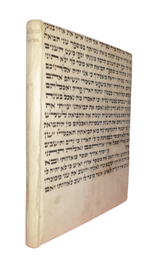





.png)
.png)
.png)
.png)
.png)
.png)
.png)
.png)
.png)
.png)
.png)

.png)
.png)
.png)
.png)
.png)
.png)
.png)
.png)
In Stock

In Stock
.png)
.png)
.png)
.png)
.png)
.png)
.png)
.png)
.png)
.png)
.png)
.png)
In Stock




.png)
.png)
.png)
.png)
.png)
.png)
.png)
.png)
.png)
.png)
.png)
.png)
.png)
.png)
.png)
.png)
.png)
.png)
.png)
.png)
.png)
.png)
.png)
.png)
.png)
.png)

In Stock

.png)
.png)
.png)
.png)
.png)


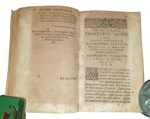
.png)


.png)
.png)



.png)

In Stock
.png)
.png)
.png)
.png)
.png)


.png)
.png)


.png)
.png)



.png)





.png)


In Stock





In Stock





In Stock






In Stock
.png)
.png)
.png)
.png)
.png)
In Stock






.png)

In Stock







.png)
.png)
.png)
.png)
.png)
.png)
.png)
.png)
.png)
In Stock





In Stock
.png)
.png)
.png)
.png)
.png)
In Stock


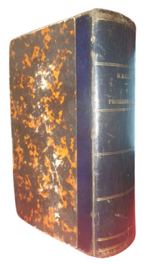







.png)
.png)
.png)
In Stock

















In Stock




.png)
.png)
.png)
.png)
.png)
.png)
.png)
.png)
.png)
.png)
.png)
.png)
.png)
.png)
.png)
.png)
.png)

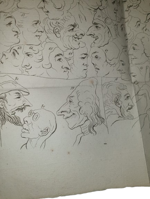



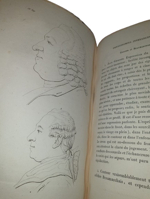






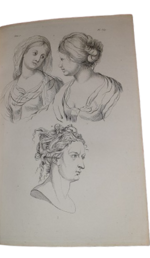










.png)
.png)










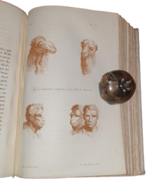


In Stock

.png)







.png)
.png)


.png)
In Stock





In Stock





In Stock
.png)
.png)
.png)
.png)
.png)
.png)
In Stock






In Stock



In Stock






.png)
.png)
.png)
.png)
.png)
In Stock






In Stock
.png)
.png)
.png)
.png)



In Stock



In Stock






In Stock

.png)
.png)
.png)

.png)



.png)
.png)



.png)


















In Stock

.png)
.png)
.png)
.png)


.png)
.png)

.png)
.png)



.png)







In Stock
.png)
.png)
.png)
.png)
.png)
.png)

.png)
In Stock





In Stock







In Stock





In Stock








.png)
.png)
.png)
In Stock





















In Stock







.png)
.png)
.png)
.png)
.png)
.png)
.png)
In Stock






.png)
.png)
.png)
.png)
.png)
.png)
.png)
.png)
.png)
.png)
.png)
.png)
.png)
.png)
In Stock
.png)
.png)

.png)
.png)
In Stock





In Stock





In Stock





In Stock
















In Stock
.png)
.png)
.png)
.png)
.png)
.png)
.png)
.png)


.png)


.png)
.png)
In Stock





.png)
.png)
.png)
.png)
.png)
.png)
.png)
.png)
.png)
.png)
.png)

.png)
In Stock





In Stock
.png)
.png)
.png)
.png)
.png)
In Stock
.png)

.png)
In Stock





In Stock








In Stock
.png)
.png)
.png)
.png)
.png)
.png)
In Stock
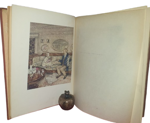


.png)


.png)
.png)
.png)
.png)
.png)
.png)
.png)
.png)
.png)
.png)
.png)
.png)
In Stock
.png)
.png)
.png)
.png)
.png)
In Stock

.png)
.png)
.png)
.png)
.png)


.png)
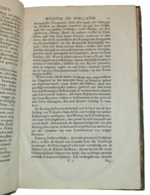


.png)




.png)




In Stock





.png)
.png)
.png)
.png)
.png)
.png)
In Stock





In Stock



In Stock





In Stock





In Stock








.png)
.png)
.png)
.png)
.png)
.png)
.png)
.png)
.png)
.png)
In Stock






In Stock
.png)

.png)
.png)
.png)

.png)
In Stock


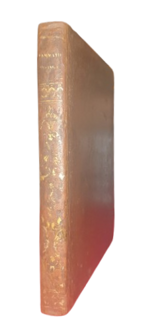



.png)
.png)
.png)
.png)
.png)
.png)
.png)
.png)
.png)
In Stock







Out Of Stock















In Stock
.png)
.png)
.png)
.png)
.png)




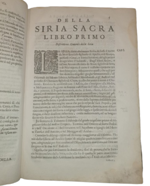

.png)



.png)
.png)



.png)

In Stock




In Stock





In Stock










.png)
.png)
.png)
In Stock
.png)
.png)


.png)

.png)






.png)










In Stock
.png)
.png)

.png)






.png)
In Stock
.png)
.png)
.png)
.png)
.png)
.png)
.png)
.png)
.png)
.png)
.png)
In Stock



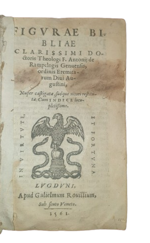

.png)
.png)
.png)
.png)
In Stock







.png)
In Stock
.png)


.png)

.png)
.png)
.png)
.png)



.png)
.png)
.png)
In Stock
.png)
.png)
.png)


.png)
.png)
.png)
.png)
.png)
.png)
.png)
.png)
.png)
.png)
.png)
.png)
In Stock






In Stock
.png)
.png)
.png)
.png)
.png)
.png)
.png)
.png)
In Stock
.png)
.png)
.png)
.png)
.png)
In Stock

.png)
.png)
.png)
.png)
In Stock










In Stock
.png)
.png)
.png)
.png)
.png)
.png)
.png)
.png)
.png)
In Stock
.png)
.png)
.png)
.png)

In Stock





.png)
.png)
.png)
.png)
.png)
.png)

In Stock
.png)
.png)
.png)
.png)
.png)
.png)
In Stock
.jpeg)
.jpeg)



In Stock
.png)
.png)
.png)

.png)
In Stock
.png)
.png)
.png)
.png)
.png)
.png)





In Stock
.png)
.png)
.png)
.png)
.png)
.png)
.png)
.png)
.png)
.png)
.png)
.png)
.png)
.png)
.png)
.png)
.png)
.png)
In Stock





In Stock













In Stock






In Stock



















In Stock
.png)
.png)

.png)
.png)
In Stock






In Stock
.png)
.png)
.png)

.png)
In Stock









.png)
.png)
.png)
.png)
.png)
.png)
In Stock






In Stock
.png)
.png)
.png)
.png)
.png)

In Stock





In Stock











.png)
.png)
.png)
.png)
.png)
.png)
.png)
.png)
.png)
.png)
.png)
.png)
.png)
.png)
.png)
















.png)

.png)
.png)






.png)
.png)
.png)
.png)


.png)
.png)
.png)
.png)
.png)
.png)



























.jpeg)
